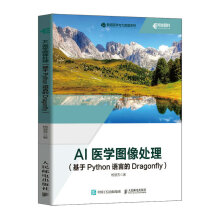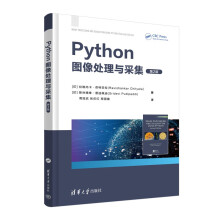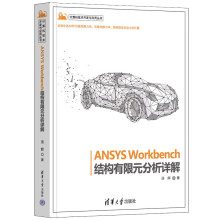










《城市综合体》将理论与实践进行了有机的结合,为读者提供了全新的阅读体验、提供了绝佳的学习机会。
城市空间要想发挥自身的作用,它背后必须有自己清晰的自我认同,不论是社区范围内还是城市、地区乃至全国,都是这样。
拥有一个综合的都市形象至关重要。它将结合本地和全球特征,重视城市遗产,从而为城市增添丰富的底蕴。在多功能性和整合设计方面,成功的城市大多拥有强烈的城市形象,能够充分利用它们的城市遗产和现代文化活动。
“塑造新形象不仅是复兴城市的历史和遗产,还在一定程度上决定了城市的未来。”
前言
Chapter 1 Preliminary understanding on urban complex
第一章 城市综合体的初步认识
1. Overview概述
2. Studies Of Relevant Conceptions相关概念研究
2.1 Compact development 空间和功能上的一体化
2.2 Concept of urban complex 城市综合体的概念
Chapter 2 Further insight into the urban complex
第二章 城市综合体的深入了解
1. Major Zone Districts 城市综合体基本内核
1.1 Functional Spaces 城市综合体的功能空间
1.1.1 Regional/Employment Centers区域/就业中心
1.1.2 Hotel Features酒店功能
1.1.3Commercial Centers商业中心
1.1.4Cultural Districts文化区
1.1.5 Entertainment and Leisure娱乐休闲功能
1.1.6 Conference会议功能
1.1.7 Parking Facilities停车设施
1.1.8 Neighborhood Centers and Mixed Use Zone Districts 社区中心和混合功能区
1.1 Urban space characters of Urban Complex城市综合体的城市化空间特征
1.2.1 Transport Interface 交通接口
1.2.2Transition 链接空间
1.2.3 Open Spaces 开放空间
2. Overall plan and design of urban complex城市综合体的整体规划与设计
2.1 Urban environment and Construction 城市环境与城市综合体的建设
2.1.1 Urban Space Environment 城市空间环境
2.1.2 Social environment城市社会环境
2.1.3 Cultural environment城市文化环境
2.1.4 Commercial environment城市商业环境
2.2 Site Selection位置与场地的选择
2.2.1 Project Location And Site Area位置和场地的大小
2.2.2 Zone district location and characteristics地形和现有状况
2.2.3 Urban environment and Context城市环境与文脉
2.3 Site Design And Landscape Details 场所的营造
2.3.1 Connection With Surrounding Environment与周边环境的联系
2.3.2 Internal Relationships between Different Uses内部关系的创建
2.3.3 Pedestrian System步行系统的创建
2.3.4 Transportation System车行系统的创建
2.3.5 Signage System标识系统的创建
2.3.6 Landscape and Environment景观环境的营造
2.4 Layout and Planning of Main Functional Zones主要功能系统的布局和规划
2.4.1 Space Planning of Office Zone办公功能的规划
2.4.2 Space Planning of Hotel Zone酒店功能的规划
2.4.3 Space Planning of Residential Zone居住功能的规划
2.4.4 Space Planning of Commercial Zone零售功能的规划
2.5 Public space公共空间和场所的设计
2.5.1 Street System and Square街道和广场设计
2.5.2 Vegetation and Gardens植被和花园设计
2.6 Parking Space Design停车空间的设计
2.6.1 Surface Parking Lots and Internal Parking Spaces地面停车和建筑内停车
2.6.2 Connection between Parking Spaces and Pedestrian Areas停车空间与步行空间的连接
2.6.3 Façade Design and Materials of Parking Facilities停车设施的外部设计和材料运用
2.6.4 Security of Parking Spaces 停车空间的安全性
2.7 Combination Methods of Mixed-use spaces城市综合体的空间组合方式
2.7.1 Goal of Spatical Organisation空间组合的目标
2.7.2 Combination Methods空间组合方式
2.8 Combination Methods of Off-Peak Hours城市综合体的时间组合方式
2.8.1 Objectives时间组合的目标
2.8.2 Combination Methods时间组合方式
3. Architectural Appearance of an Urban Complex 城市综合体的外形和形象设计
3.1 Building Massing and Form整体与连贯性
3.2 Be Consistent with the City’S Architectural Characters 与城市形象的统一性
3.3 Balance of Colors色彩的平衡性
Chapter 3 Intensive Studies of Urban Complex
第三章 城市综合体的深入研究
1. Higher adaptability of the urban complex is advanced by developing new technology
1. 通过新技术的开发提高城市综合体对城市环境的适应性
2. Public facilities and transportation system are introduced into the urban complex to create new public space
2. 通过在城市综合体中引入城市空间和交通来创造公共空间
3. The combination of art and technology creates the innovative building façade
3. 通过技术与艺术的结合来塑造城市综合体的建筑立面
4. Adaptability of different functions is strengthened through the construction of combined space.
4. 通过对组合空间的建设来加强不同功能变化的适应性
5. High density developments form the unique city landscape.
5. 通过高密度的群体开发来形成城市的空间景观气候
6. Urban complexes are merged into the natural context by architecture appearance design and
materials.
6. 通过建筑外形设计和材料的运用提高建筑与城市自然环境特征的切合度
7. Sustainable design and aesthetics build up the new green urban complex.
7. 通过可持续性设计和美学效果的运用打造出新型绿色综合体
Chapter 4 New Trends on Urban Complex
第四章 城市综合体发展的新趋势
1. General Development Trends城市综合体发展的趋势
2. Development Trends in Different Countries城市综合体在不同国家的发展趋势
2.1 Development Trends in America城市综合体在美国的发展趋势
2.2 Development Trends in Europe城市综合体在欧洲的发展趋势
2.3 Development Trends in Japan城市综合体在日本的发展趋势
3. Development Characteristics and New Trends in China城市综合体在中国的发展特点和新趋势
3.1 Development Characteristics发展特点
3.2 Development Elements发展因素
3.3 Analysis of Development Trends发展趋势分析